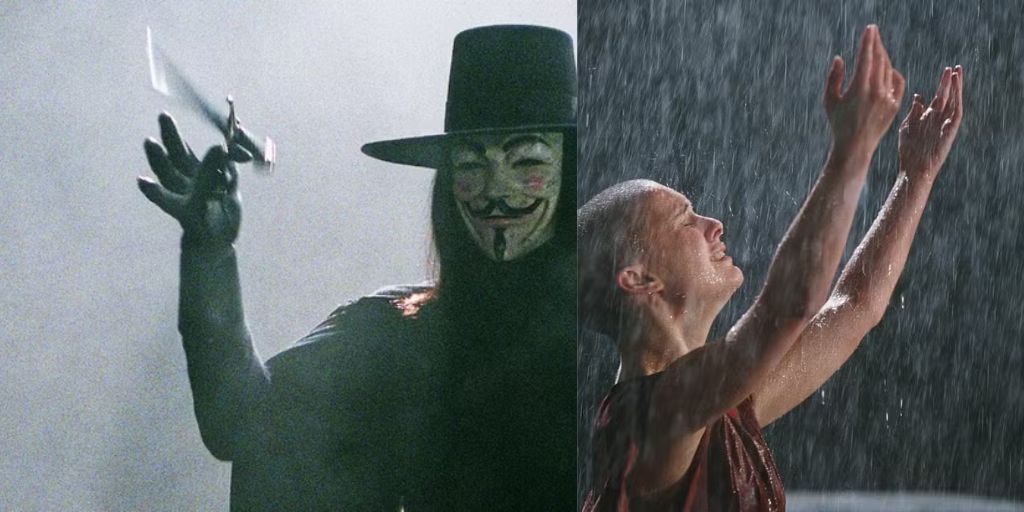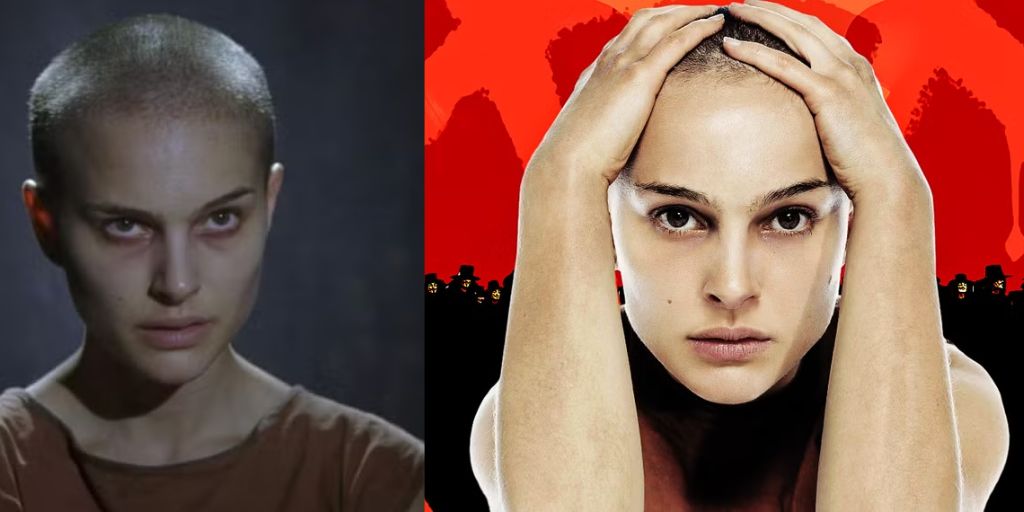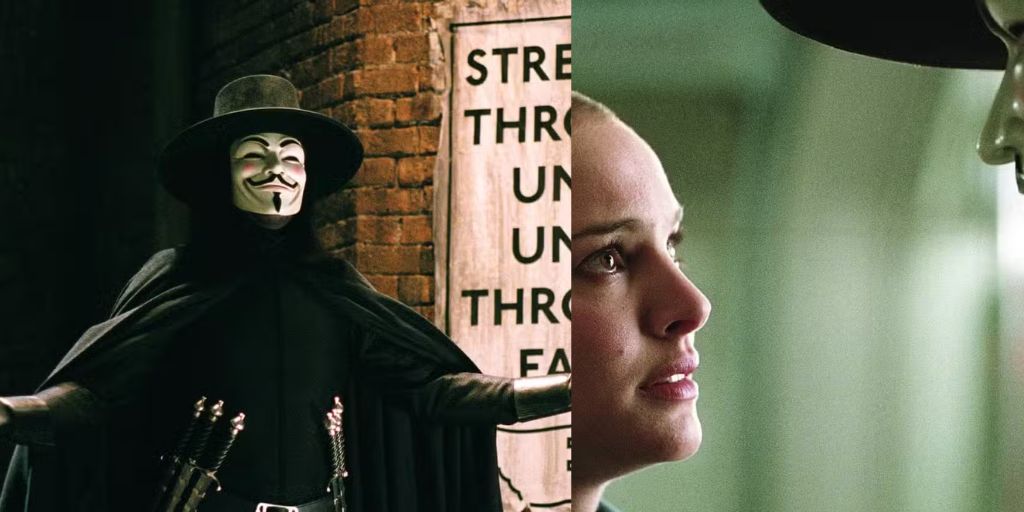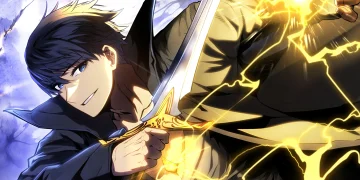In the early 2000s, Warner Bros. had a tough time bringing their most well-known comic book characters to the big screen. Despite their massive catalog of superhero stories, they faced many challenges turning those tales into successful films.
Movies based on their most popular characters like Superman and Batman either struggled at the box office or didn’t meet audience expectations. However, while the studio couldn’t always capture the magic of traditional superheroes, they managed to find success in adapting graphic novels from their Vertigo Entertainment imprint.
Vertigo is a brand known for more mature, darker, and complex stories compared to traditional superhero tales. These stories often dealt with moral gray areas, darker themes, and grittier characters.
What worked for Warner Bros. during this time was that these films didn’t require the same kind of deep knowledge of superhero mythology. Instead, they could be marketed as stand-alone crime thrillers, making them easier for general audiences to connect with.
Films like Road to Perdition (2002) and A History of Violence (2005) were not just successful, but also received glowing reviews. These films even garnered nominations at the prestigious Academy Awards. They stood out by presenting raw, human dramas wrapped in crime narratives, without being tied to the fantastical worlds of superheroes that many audiences struggled to connect with.
However, no adaptation created more anticipation than V for Vendetta. Directed by James McTeigue and executive produced by Lana and Lilly Wachowski, V for Vendetta generated a great deal of excitement among fans and critics alike.
The Wachowskis had been given near-complete creative freedom by Warner Bros. after the massive success of The Matrix trilogy, a rare opportunity in Hollywood that allowed them to create almost anything they wanted. This film had all the makings of another blockbuster hit.
V for Vendetta—The Story and Themes
Set in a dystopian future where a far-right authoritarian political party known as “Norsefire” has taken control of the government, media, and police, V for Vendetta tells the story of a resistance led by a mysterious vigilante named V, played by Hugo Weaving.
The Norsefire party has a firm grip on society, with the wealthiest members supporting its policies, while most citizens remain unaware of the corruption and lies they are being fed through state propaganda. The citizens live under a regime of fear, as the government uses constant surveillance, media control, and outright violence to maintain control.
The story follows Evey Hammond, portrayed by Natalie Portman, who works for the state-run television network. Evey’s parents were political activists who spoke out against the government before being silenced by Norsefire.
Even though she is aware of her parents’ resistance, Evey has avoided becoming involved in activism herself, mainly out of fear for her safety. However, her life takes a drastic turn when she encounters V, a vigilante bent on overthrowing the corrupt government. V saves Evey from a dangerous situation and slowly pulls her into his plot to bring down Norsefire.
The film presents itself as a revolutionary thriller, full of visually stunning scenes of rebellion against an oppressive regime. However, compared to the original graphic novel by Alan Moore, the film strips away much of the novel’s complex political and philosophical layers.
In the graphic novel, V is an anarchist fighting against a fascist government, symbolizing a larger struggle between oppressive systems and true freedom. However, in the film, these themes are simplified. The battle is reduced to a more straightforward fight between liberalism and conservatism, instead of the more radical ideas of anarchy versus fascism.
Why V for Vendetta Was Hard to Adapt
Adapting Alan Moore’s graphic novel V for Vendetta was no easy task. Moore is a legendary figure in the comic books world, known for creating complex, layered stories that challenge societal norms and question the role of heroes in popular culture.
His works often goes into darker themes, and his characters aren’t the clean-cut, virtuous heroes seen in many other comic books. Instead, they operate in shades of gray, making difficult moral choices that don’t always fit neatly into good or bad categories.
This complexity made V for Vendetta difficult to translate into a mainstream action film. The graphic novel shows themes like anarchy, fascism, and personal freedom in a deeply philosophical way. However, the Wachowskis, who were responsible for shaping much of the film’s direction, made some significant changes to the story that altered its tone and message.
One of the most significant changes was turning V into a more traditional hero figure. In the graphic novel, V is portrayed as an anarchist with a somewhat darker and more mysterious agenda.
His methods are extreme, and his goals are not always clear-cut. He doesn’t fight simply for the good of others, but rather for a complete destruction of the existing system, with no guarantee of what will replace it.

In the film, however, V is transformed into a noble, straightforward hero. He is painted as someone fighting purely for the good of the people. One scene, in particular, exemplifies this change.
V takes Evey to his underground hideout and compares himself to the character in The Count of Monte Cristo, going as far as to say that it is his favorite film. This shift in V’s character makes him more relatable to a broader audience, but it also waters down the more radical elements of his personality that made him so fascinating in the original story.
Simplified Villains and Politics
Another key difference between the graphic novel and the film adaptation lies in how the villains are portrayed. In the graphic novel, Moore goes to great lengths to humanize even the most reprehensible characters. The leaders of the fascist Norsefire government, like High Chancellor Adam Sutler and Peter Creedy, are undeniably evil.
However, Moore gives them layers, showing how they manage to gain power by appealing to a certain portion of the population. They use their charisma and manipulative skills to radicalize ordinary people, making their evil even more terrifying because it feels plausible.
In the film, these villains are reduced to one-dimensional characters who come across as typical “bad guys” without much depth. Adam Sutler, played by John Hurt, and Peter Creedy, played by Tim Pigott-Smith, are portrayed as mustache-twirling villains, more fitting for a cheesy action movie than a serious political drama.
This oversimplification removes much of the nuance from the story, making it feel more like a traditional good-versus-evil tale rather than a complex scheme of fascism and radicalism.
The film also oversimplifies the political themes of the original graphic novel. While the film references important issues like racism, sexism, and homophobia, it doesn’t go into much depth in showing these topics.
These are only touched on briefly, and the film doesn’t make a strong effort to examine how these forms of discrimination play into the larger societal problems it portrays. In contrast, Moore’s graphic novel goes deeply into these issues, making it a much more layered and thought-provoking piece of work.
Evey’s Character Arc and the Anarchist Themes
Evey’s character arc also differs significantly between the graphic novel and the film. In the original story, Evey undergoes a profound transformation after being kidnapped and tortured by V. Through this experience, she becomes a stronger, more independent person, eventually embracing V’s anarchist philosophy.
Her journey is one of personal growth, as she learns to question the existing power structures and reject the idea of replacing one form of government with another. Instead, she begins to see that true freedom lies in breaking down these systems altogether.
In the film, however, Evey’s transformation is less radical. While she does experience trauma at the hands of the Norsefire regime, her ultimate goal is not to dismantle the government entirely. Instead, she seeks to replace the current regime with a more democratic and fair system.
This shift makes her character less revolutionary than in the graphic novel, where she fully embraces anarchist ideals. In the film, she seems more like a moderate reformer than someone fighting for a complete societal overhaul.
This change in Evey’s character arc reflects a broader shift in the film’s message. The anarchist themes that are central to the graphic novel are largely absent from the film.
Instead of advocating for the total destruction of the system, the film suggests that a better version of the same system can be achieved through reform. This is a significant departure from the original story, where Moore presents anarchy as the only solution to a corrupt, fascist state.
The Challenges of Condensing a Complex Story
One of the biggest challenges in adapting V for Vendetta into a film was condensing the complex narrative of the graphic novel into a two-hour action movie. Alan Moore’s original work is dense with themes, character development, and political commentary, making it difficult to capture all of that in a 133-minute film.
While the film is visually impressive and delivers plenty of action, it struggles to balance the need for entertainment with the deeper philosophical and political ideas that made the graphic novel so impactful.
The film focuses more on drawing parallels to contemporary politics than on showing the timeless themes present in Moore’s work. While the graphic novel’s themes of resistance, oppression, and the abuse of power are relevant in any era, the film seems more concerned with making statements about the political climate of the early 2000s, particularly during the Bush administration.
This gives the film a sense of immediacy, but it also limits its broader applicability. Moore’s graphic novel, on the other hand, remains relevant regardless of the political context in which it is read because it tackles universal themes of power, control, and resistance.
V for Vendetta—A Missed Opportunity
While V for Vendetta is a visually stunning and entertaining film, it ultimately falls short of fully capturing the depth and complexity of Alan Moore’s graphic novel.
The film’s simplification of characters, themes, and political messages makes it feel more like a traditional Hollywood blockbuster than a radical, thought-provoking piece of political art.

While it remains a fan favorite and has achieved a certain cultural status, particularly in the use of the Guy Fawkes mask as a symbol of resistance, it doesn’t quite live up to the legacy of the original graphic novel.
For viewers who have not read the graphic novel, the film may still be an exciting and engaging experience. However, for those familiar with Moore’s work, it is likely to feel like a missed opportunity to bring one of the most powerful political stories in comic book history to life in a way that does justice to its original message.
Conclusion
V for Vendetta was a bold attempt by Warner Bros. to adapt a complex, politically charged graphic novel into a mainstream film. While the film succeeded in many areas, particularly in its visual style and action sequences, it ultimately simplified the story’s deeper themes and characters.
The result is an entertaining but less radical version of Alan Moore’s vision. For fans of the original graphic novel, the film is a fascinating but imperfect adaptation that doesn’t quite reach the heights of its source material.




